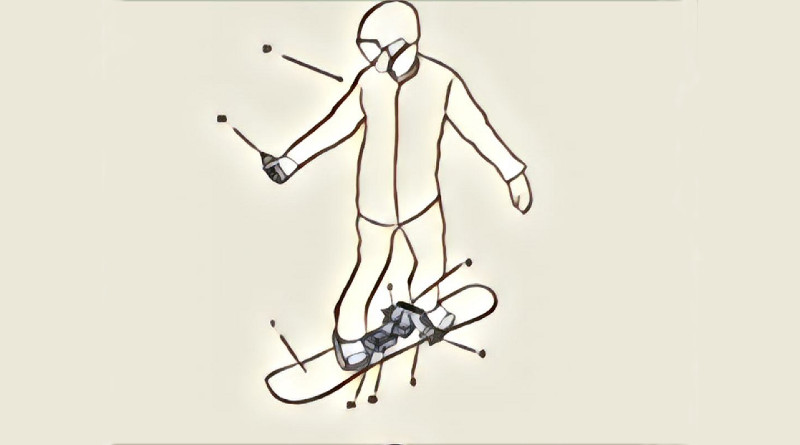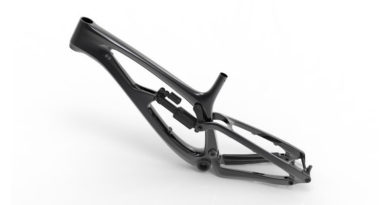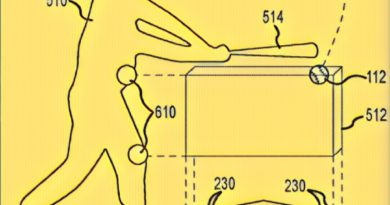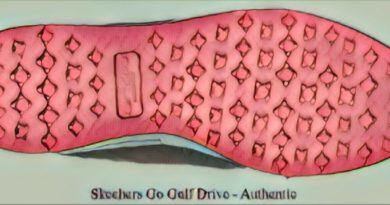Sign Me Up for this Snowboard Invention

Not many interesting snowboard inventions pop up in the patent office records, but every now and then one will really grab my attention. Honestly, any patent applications with “motorized” in the title are irresistible click-bait to me, which is why the title “Motorized Snowboard System,” US Pub. No. 20180021663, caught my eye.
The application describes the invention as:
The subject invention provides a snowboard that is propelled over the snow by a battery powered motor/wheel array. The preferred embodiments include a pair of motor/wheel arrays disposed on both sides of the board, on which are fitted specialized snow propellers designed for various snow conditions. The motor and wheel array are attached to the snowboard with a universal mounting plate, which utilizes any snowboard’s standard binding mounting holes or channels. The motor/wheel array can be mounted to the board with L shaped brackets, or alternatively with spring loaded hinges. The motor/wheel arrays can be elevated with spacers, which position the wheels slightly lower than the deck of the board to provide traction during propulsion. Shock absorbers can also be utilized to provide downward force to the motor/wheel arrays, and allow upward articulation to accommodate inclined terrain.
Check out this invention!
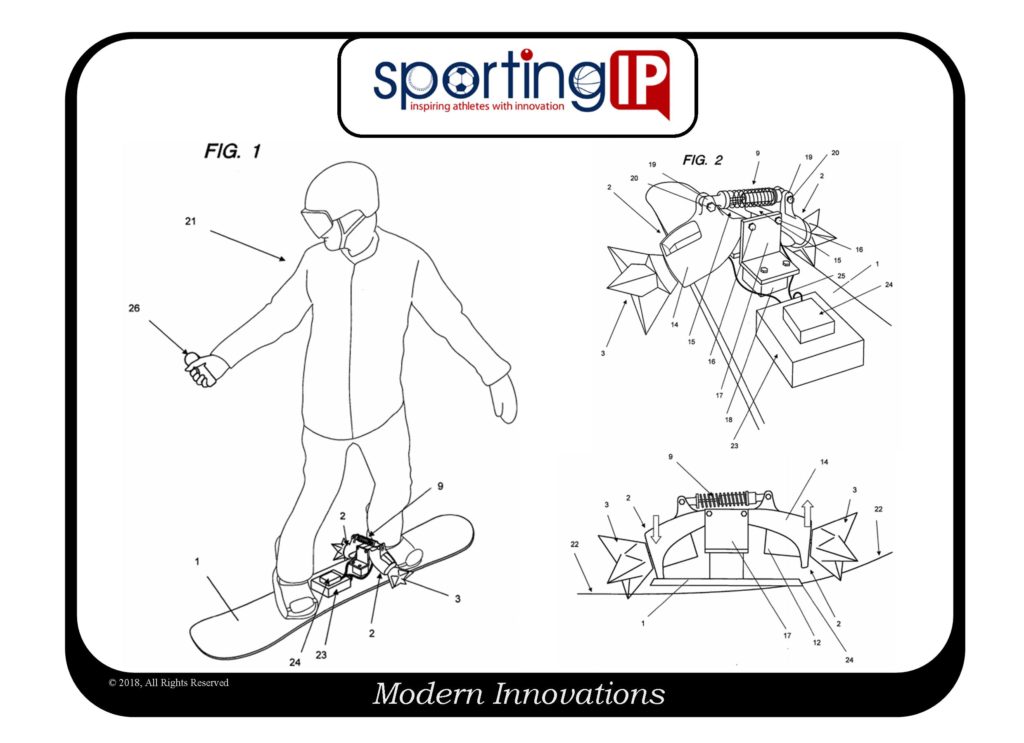
The application recognizes that other inventors have tried to power snowboards in the past, but these prior attempts had problems. Specifically:
BACKGROUND OF THE INVENTION
[0005] There are often two camps on a ski hill; skiers and snowboarders. Skiers argue that a long tradition, maneuverability, and the ability to glide their skis to move along the flats on ungroomed snow is superior to snowboarding. In steep, ungroomed, backcountry territory, a snowboard offers a large, stable, platform on which to ride. Snowboarders claim the effortless floating sensation felt while riding on ungroomed powder is unparalleled. Yet, the fact remains that travelling on flats both in and out of bounds remains problematic for snowboarders compared to those on skis. To travel on flats, snowboarders must release one foot from its binding to push the snowboard similar to how one propels a skateboard. This movement is inefficient, exhausting, and results in much lost time and energy if one must propel the snowboard across a long flat. In soft, ungroomed snow, the snowboarder’s propelling foot will posthole when trying to push their board, which often results in the snowboarder getting stuck and having to release both feet from their bindings to get unstuck. The snowboarder may then need to hike through the snow to get to a ski lift, or other rallying destination. Often, snowboarders must depend on a skier or snowmobiler to give them a tow to their destination.
[0006] To overcome those shortcomings there have been numerous attempts to add power to a snowboard to not only allow a snowboard to move along level snow surfaces but to also move it along and up trails to those coveted backcountry spots. See, for example, U.S. Pat. Nos. 4,600,073; 4,984,648; 5,662,186; 6,698,540; 6,848,527; 7,434,644; 7,900,723; 7,905,310; 8,091,671; 8,205,696; 8,844,664; and 8,991,541, as well as, International Publication Nos. WO 2007/123469 and WO 2008/098541. However, these attempts to add power to snowboards have required that the board be truncated, have cumbersome and awkward modifications made to it, or alter the board so that the rider no longer feels as if they are riding a traditional snowboard.
[0007] Therefore, need remains for a motorized snowboard whose power system is capable of propelling the snowboarder across flat or inclined terrain, is unobtrusive, and allows the rider to ride the board naturally while going downhill.
If it works, this will sell! Cool invention.
Dave Dawsey – Monitoring Snowboard Inventions
PS – please follow me on Twitter (@sportingIP) and sign-up to receive posts via email.

